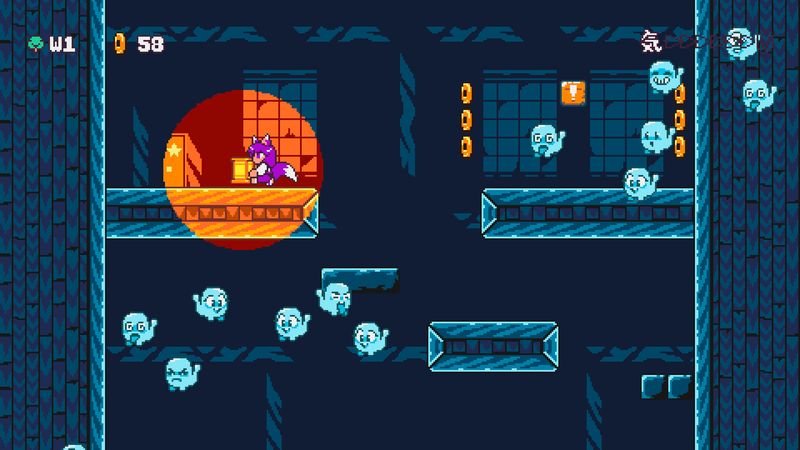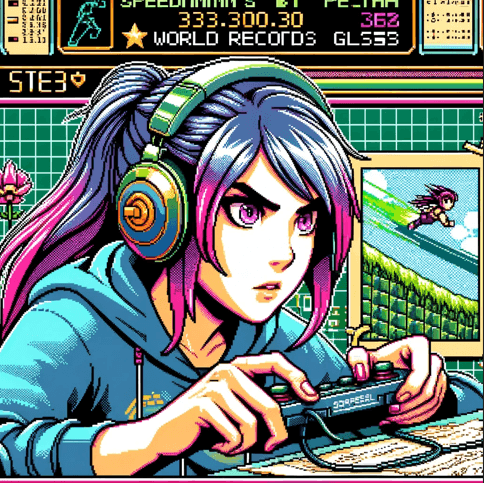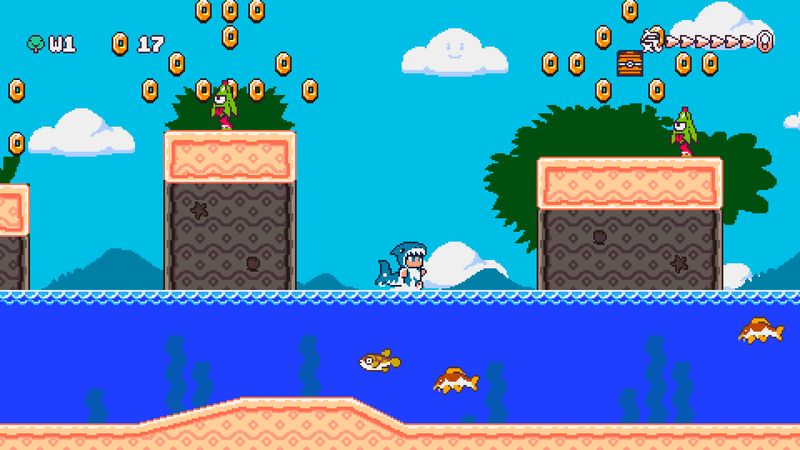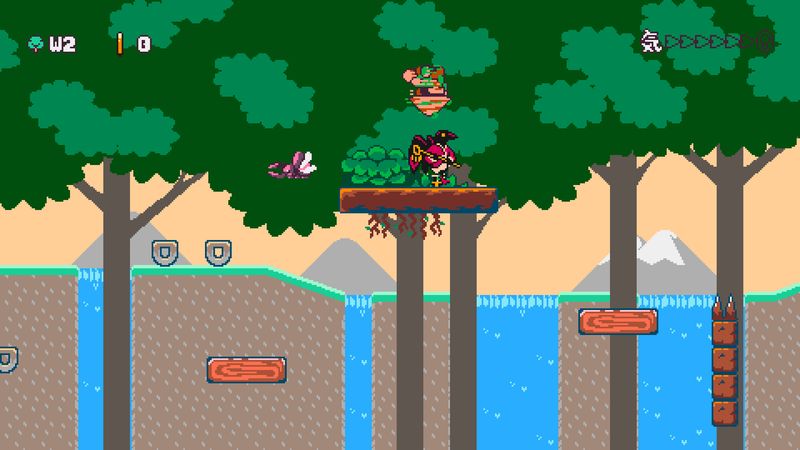 I’d like to start by saying Kitsune Games has outdone itself with Kitsune Tails. According to user feedback from FoxMania, it shares much with Super Mario Bros. 3 while leaving its own unique mark on the platformer genre. As a professional gamer, I appreciated the balance between classic platforming and modern gaming elements.
I’d like to start by saying Kitsune Games has outdone itself with Kitsune Tails. According to user feedback from FoxMania, it shares much with Super Mario Bros. 3 while leaving its own unique mark on the platformer genre. As a professional gamer, I appreciated the balance between classic platforming and modern gaming elements.
 The game’s controls are rock-solid—crucial for an enjoyable platformer. FoxMania noted that Kitsune Tails faithfully replicates elements from Super Mario, like note blocks, donut lifts, and Koopa shells. However, the ability to use collected items mid-level adds a unique survival strategy that caught my attention.
The game’s controls are rock-solid—crucial for an enjoyable platformer. FoxMania noted that Kitsune Tails faithfully replicates elements from Super Mario, like note blocks, donut lifts, and Koopa shells. However, the ability to use collected items mid-level adds a unique survival strategy that caught my attention.

game’s colorful, pixel-art visuals inspired by Japanese folklore
 The game’s controls are rock-solid—crucial for an enjoyable platformer. FoxMania noted that Kitsune Tails faithfully replicates elements from Super Mario, like note blocks, donut lifts, and Koopa shells. However, the ability to use collected items mid-level adds a unique survival strategy that caught my attention.
The game’s controls are rock-solid—crucial for an enjoyable platformer. FoxMania noted that Kitsune Tails faithfully replicates elements from Super Mario, like note blocks, donut lifts, and Koopa shells. However, the ability to use collected items mid-level adds a unique survival strategy that caught my attention.
 Kitsune Tails nails the visual concept as well. User feedback highlights the game’s super cute graphics, which I felt added so much to the game’s feel. Using visuals inspired by Japanese folklore, Kitsune Games brings a charming aesthetic to the supports a rich and immersive experience.
Kitsune Tails nails the visual concept as well. User feedback highlights the game’s super cute graphics, which I felt added so much to the game’s feel. Using visuals inspired by Japanese folklore, Kitsune Games brings a charming aesthetic to the supports a rich and immersive experience.

 As an ardent admirer of sound designs in games, the audio in Kitsune Tails felt quite balanced. Voice acting plays into the narrative for additional depth, which is a refreshing touch in a platformer game. User appreciation for the catchy, soothing melodies of the soundtrack isn’t missed on me, too. Kitsune Games harnessed the power of audio in game design to create a distinctive vibe that adds to the game’s overall atmosphere.
As an ardent admirer of sound designs in games, the audio in Kitsune Tails felt quite balanced. Voice acting plays into the narrative for additional depth, which is a refreshing touch in a platformer game. User appreciation for the catchy, soothing melodies of the soundtrack isn’t missed on me, too. Kitsune Games harnessed the power of audio in game design to create a distinctive vibe that adds to the game’s overall atmosphere.
 And let’s not forget the characters! These aren’t just sprites on the screen – there’s a level of personal investment players have with them. This mutual journey of discovery between the protagonist and players adds a layer of depth rarely encountered in platformers. The way these characters interact influences the narrative, gameplay, and overall loveable charm of Kitsune Tails.
And let’s not forget the characters! These aren’t just sprites on the screen – there’s a level of personal investment players have with them. This mutual journey of discovery between the protagonist and players adds a layer of depth rarely encountered in platformers. The way these characters interact influences the narrative, gameplay, and overall loveable charm of Kitsune Tails.

 It is important to talk about the challenge level, as seen in FoxMania’s review. From superficial observation, Kitsune Tails looks all sugar, spice, and everything nice – until you encounter the Kaizo levels, that is. The game offers a reasonable difficulty curve, with the option to choose between three levels of challenge and a kinder learning curve for novices. This challenge is also reflected in some of the game’s more complex puzzles, providing a satisfying challenge level for all gamers.
It is important to talk about the challenge level, as seen in FoxMania’s review. From superficial observation, Kitsune Tails looks all sugar, spice, and everything nice – until you encounter the Kaizo levels, that is. The game offers a reasonable difficulty curve, with the option to choose between three levels of challenge and a kinder learning curve for novices. This challenge is also reflected in some of the game’s more complex puzzles, providing a satisfying challenge level for all gamers.
 Which brings us to our next point, replay value. Does Kitsune Tails incentivize players to attempt new runs? Absolutely! With branching paths and different difficulty levels, gamers will have plenty of reasons to revisit this charming world.
Which brings us to our next point, replay value. Does Kitsune Tails incentivize players to attempt new runs? Absolutely! With branching paths and different difficulty levels, gamers will have plenty of reasons to revisit this charming world.

vibrant blend of classic platformer aesthetics with modern touches
 Considering its place alongside similar platformers, Kitsune Tails pretty much stands its ground. The unique features it brings, like the item usage in mid-level and diverse difficulty options, add a fresh twist to the classic formula. However, some aspects, such as the motivations for exploration, could be made more rewarding in the future updates or sequels – as FoxMania pointed out in their review.
Considering its place alongside similar platformers, Kitsune Tails pretty much stands its ground. The unique features it brings, like the item usage in mid-level and diverse difficulty options, add a fresh twist to the classic formula. However, some aspects, such as the motivations for exploration, could be made more rewarding in the future updates or sequels – as FoxMania pointed out in their review.
 Personally, I can’t wait to see what Kitsune Games will bring next. Whether it’s a sequel to Kitsune Tails or another venture into the world of platformers, their knack for balancing tradition and innovation is something I’ll keep my eyes on.
Personally, I can’t wait to see what Kitsune Games will bring next. Whether it’s a sequel to Kitsune Tails or another venture into the world of platformers, their knack for balancing tradition and innovation is something I’ll keep my eyes on.

 Same here. A sequel that fine-tunes the exploration mechanics would make Kitsune Tails a legendary franchise. It’s a gem in the platformer genre, and I believe that Kitsune Games has the potential to achieve even greater things.
Same here. A sequel that fine-tunes the exploration mechanics would make Kitsune Tails a legendary franchise. It’s a gem in the platformer genre, and I believe that Kitsune Games has the potential to achieve even greater things.
 Whatever’s next for Kitsune Games, I’m hoping they’ll keep creating games that give platformer enthusiasts, speedrunners, and completionists alike reasons to strategize, perfect, and replay our favorite moments.
Whatever’s next for Kitsune Games, I’m hoping they’ll keep creating games that give platformer enthusiasts, speedrunners, and completionists alike reasons to strategize, perfect, and replay our favorite moments.


